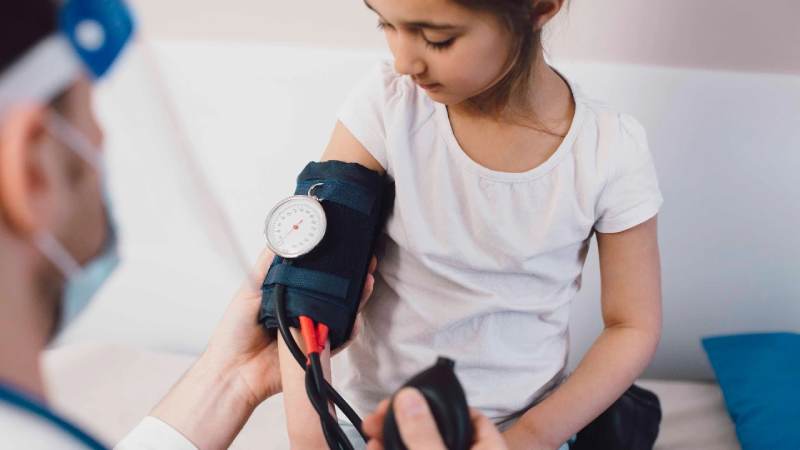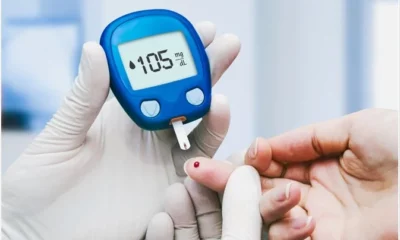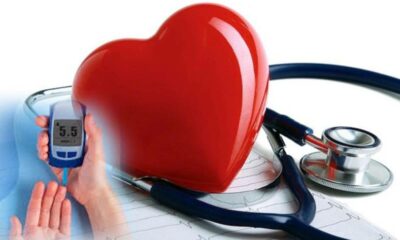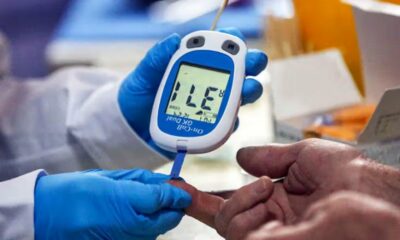Doctors are aware that, in theory, every effort should be made to reduce the prevalence of hypertension as it is one of the leading preventable causes of mortality for people worldwide. The authors of a recent study published in JAMA Pediatrics, however, claim that follow-up and blood pressure control techniques for young people with hypertension are one such glaringly overlooked practice stone.
They said, “And that’s no small group: the estimated prevalence of hypertension in children is 6%, and it’s on the rise.”
“Few hypertensive youth have appropriate follow-up, are ever diagnosed, or are treated,” the authors wrote. “There is a lack of consensus on the significance of pediatric hypertension and conflicting society recommendations for pediatric blood pressure screening and follow-up.”
With the intention of assisting in the correction of the underdiagnosis and undertreatment of childhood hypertension, the investigators wanted to uncover data that was significant enough to be ignored. They started their large-scale, retrospective population-based cohort study with over 7 million participants: all living children in Ontario, Canada, between 1996 and 2021 who were between the ages of 3 and 18. Only kids who had kidney replacement surgery in the past were not included. In the end, 12,025 matched controls and 25,605 kids with hypertension diagnoses were included in the study.
By age, sex, birth weight, maternal gestational hypertension, previous comorbidities (chronic renal disease, diabetes, cardiovascular surgery), and a propensity score for hypertension, each child with hypertension was matched with five controls who did not have hypertension. The Kaplan-Meier technique and Cox proportional hazards regression were used to assess the primary outcome, which was the time to major adverse cardiac events (MACE).
The 25,605 children in the cohort with hypertension had a median age (IQR) of 15 (11–17) years, with 14,743 (57.6%) of them being male. Prior morbidities were rare, and baseline variables were balanced following propensity score matching.
Incidence of MACE was 4.6 per 1000 person-years in children with hypertension vs 2.2 per 1000 person-years in controls at a median (IQR) follow-up of 13.6 (7.8-19.5) years (HR, 2.1; 95% CI, 1.9-2.2). Adolescents diagnosed with hypertension faced a 2- to 3-fold increased risk of stroke, hospitalization for myocardial infarction or unstable angina, and congestive heart failure. The authors noted that the children’s chance of dying from CVD was not increased by the 2.1-fold increase in MACE risk.
These findings are consistent with those of a another recent study that discovered subclinical cardiovascular disease (CVD) was 1.4–1.8 times more common among kids and teenagers with high blood pressure above the 90th percentile. Subclinical CVD in youth can easily develop into subclinical CVD in adults, which increases the risk of major CVD and death. Subclinical CVD in adults includes left ventricular hypertrophy, higher carotid intima-media thickness, higher pulsewave velocity, atherosclerotic changes, retinal microvascular disease, and albuminuria.
The authors pointed out that there is now insufficient direct data connecting childhood hypertension to significant cardiovascular disease, which is one reason why existing pediatric guidelines offer contradictory recommendations for blood pressure surveillance in children. They stated that while important CVD risk factors (such as diabetes, smoking, and dyslipidemia) are more prevalent in adults, the well-established link between hypertension and CVD in adults “cannot be directly extended to children.”
“Optimizing the care provided to youth with hypertension may help prevent long-term adult CVD, with substantial health and cost-saving benefits,” the authors concluded. “Further research should confirm these findings among children with hypertension defined by standardized blood pressure criteria and evaluate CVD prevention strategies, including dietary modification, lifestyle interventions, and antihypertensive medications.”

 Diabetology1 week ago
Diabetology1 week ago
 Diabetology1 week ago
Diabetology1 week ago
 Diabetology7 days ago
Diabetology7 days ago
 Diabetology5 days ago
Diabetology5 days ago
 Diabetology1 week ago
Diabetology1 week ago
 Diabetology5 days ago
Diabetology5 days ago
 Diabetology3 days ago
Diabetology3 days ago
 Diabetology3 days ago
Diabetology3 days ago
















